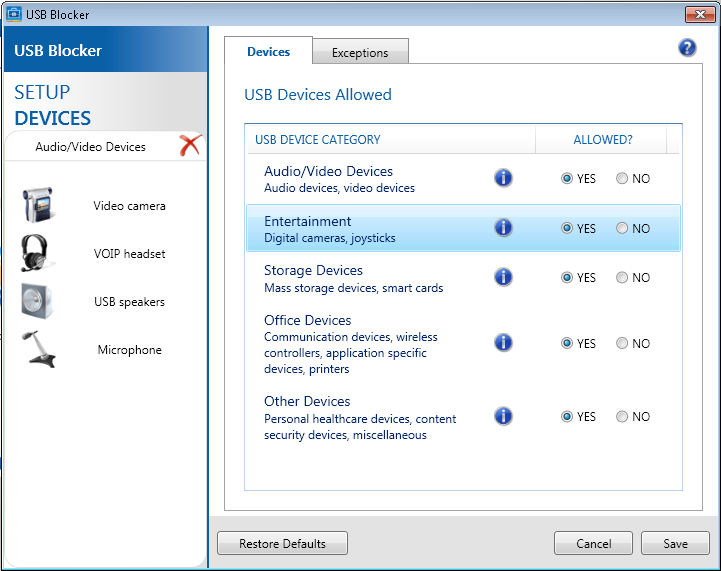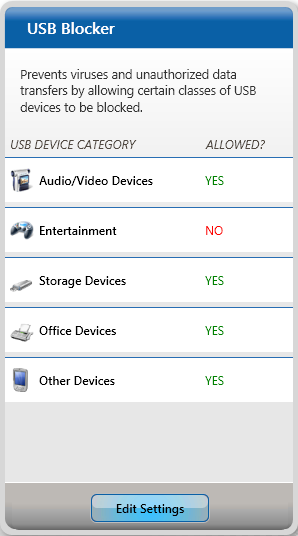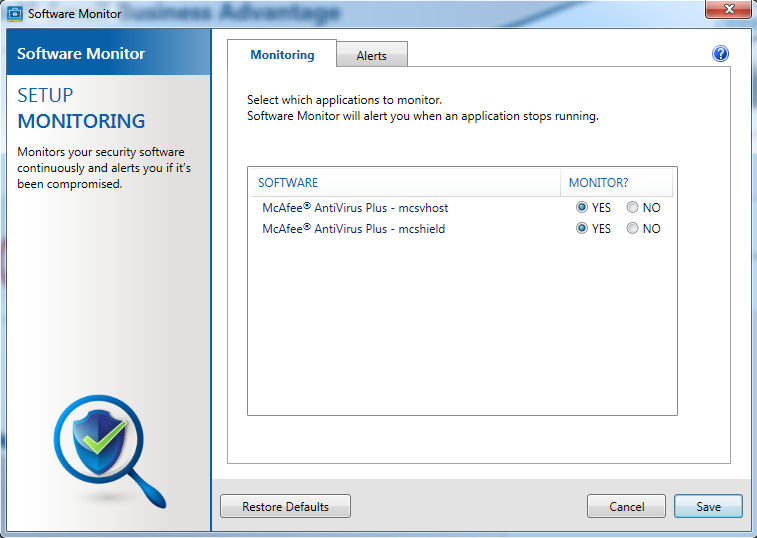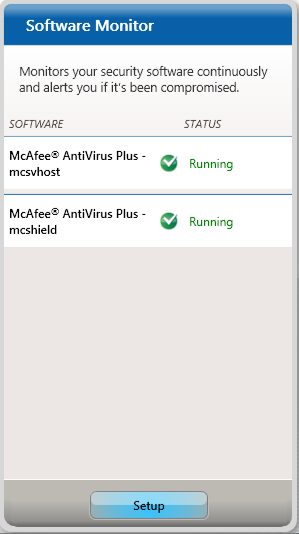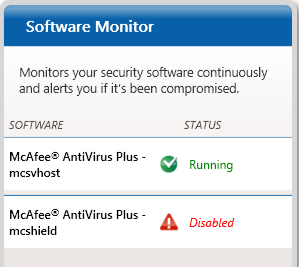Intel vPro In 2012, Small Business Advantage, And Anti-Theft Tech.
One year ago, we took a look at three generations of Intel's vPro, charting how its features evolved. Now, we have a new version to explore. Additionally, we're putting Anti-Theft technology to the test, along with the new Small Business Advantage suite.
Hands-On With Small Business Advantage's Features
The first module we configured was Intel's USB Blocker. Prior to launching it, I was worried this would be an unintelligent feature that'd simply disable USB connectivity altogether. I was wrong, though; it contains USB device categories that grant or revoke access to certain types of hardware. Then, even more granularly, you can create exceptions to those rules.
Once the USB Blocker is configured, its status is pushed to the SBA dashboard.
Next up was the Software Monitor, which keeps tabs on running processes to make sure they aren't quietly circumvented by malicious code. I installed McAfee's anti-virus to test the applet's functionality. You typically want some form of virus protection running, so any application that shuts it off is very likely suspect.
After setting up Software Monitor, we can see its status from the same central dashboard.
When Software Monitor detects that a tracked process is deactivated, it takes a few steps to let you know. First, it records the issue in its event log. Second, you're prompted by a notification in the task bar of the app that shut down. Third, the dashboard is refreshed to alert you of a problem.
Get Tom's Hardware's best news and in-depth reviews, straight to your inbox.
Current page: Hands-On With Small Business Advantage's Features
Prev Page Installing Intel Small Business Advantage Next Page Hands-On With Small Business Advantage's Features, Continued-
bit_user Toms, you really need to blow the lid off the incredibly dangerous security flaws in vPro that can enable undetectable and irremovable rootkits. semiaccurate.com did some reporting on this. Please alert the mainstream. The exploit was already demonstrated some time ago.Reply
Thanks.
-
bit_user I don't know if it's allowed, but here's the link:Reply
http://semiaccurate.com/2012/05/15/intel-small-business-advantage-is-a-security-nightmare/
Maybe the editors will read it before they remove this post. It's not a terribly well-written article. That's where you can help, Tom's.
-
freggo Why not integrate a GPS receiver into the motherboard and than have an option to define 'allowed' active areas for the system. For desktops that should be no problem as they do not get moved much.Reply
For laptops you may have to take a bit more time defining your typical usage area of course; you could even let the laptop track your typical usage location patterns so it can make recommendations for the best setup.
If the systems is outside the area either request a special password or some other form of identification to unlock the machine either for one time or for inclusions of the current location into the allowed area.
Damn, I should get that patented :-)
-
bigdragon I have a hard time reading this lengthy article after all the trouble I've had with Intel's DBS1200KP and DBS1200KPR. Intel keeps promoting virtualization, but they failed to implement VT-d on that product even though there's no reason for it not to be supported.Reply -
StitchExperiment626 Backup is my complaint! Doing a full backup every night there isn't enough time.Reply -
jkflipflop98 Keep in mind, all the garbage you read on that site is by Charlie Demerjian. . . who honestly doesn't know much about anything.Reply -
labtech drew Having owned an MSP (Managed Service Provider), with hundreds of customers, and thousands of machines under management, vPro add's enormous cost savings when implemented.Reply
Customer has a blue screen? No problem, you can KVM right in and see the issue.
Workstation hung after remotely applying patches - calling the user and saying "Can you go over and hold the power button for me?" is no longer necessary. Simply shutdown the machine via vPro and power it back on. Even remotely re-imagine a machine from backup is possible.
However, my favorite use case is the instant back to work use case. End user hard drive fails - obviously a truck roll is needed, but the most important thing is to get the user productive again. Leverage vPro's ability to redirect IDE (IDEr) to a network Live Linux CD at least gets the user in to Web Outlook, if not 100% back in business.
How about power savings? Schedule machines to auto shutdown at night, and for your patch window, use vPro to power up the workstations, apply the patches, power down (from windows) and if a machine hangs on shutdown use the vPro power off command. Allows for nightly maintenance and keeps costs savings maximized.
Rolling out vPro can be a bit of work using native tools, but there are solutions available (shameless plug) like LabTech Software (http://www.labtechsoftware.com) which can remotely provision and manage vPro along with any other IT management function you can think of.
-Drew
Full disclosure: Having ran an MSP and worked with many enterprises, out of band management tools were critical in every mature organization I worked with. As a co-founder of LabTech Software, I have engaged Intel and we are working closely to build out solutions that vPro truly solves for.
